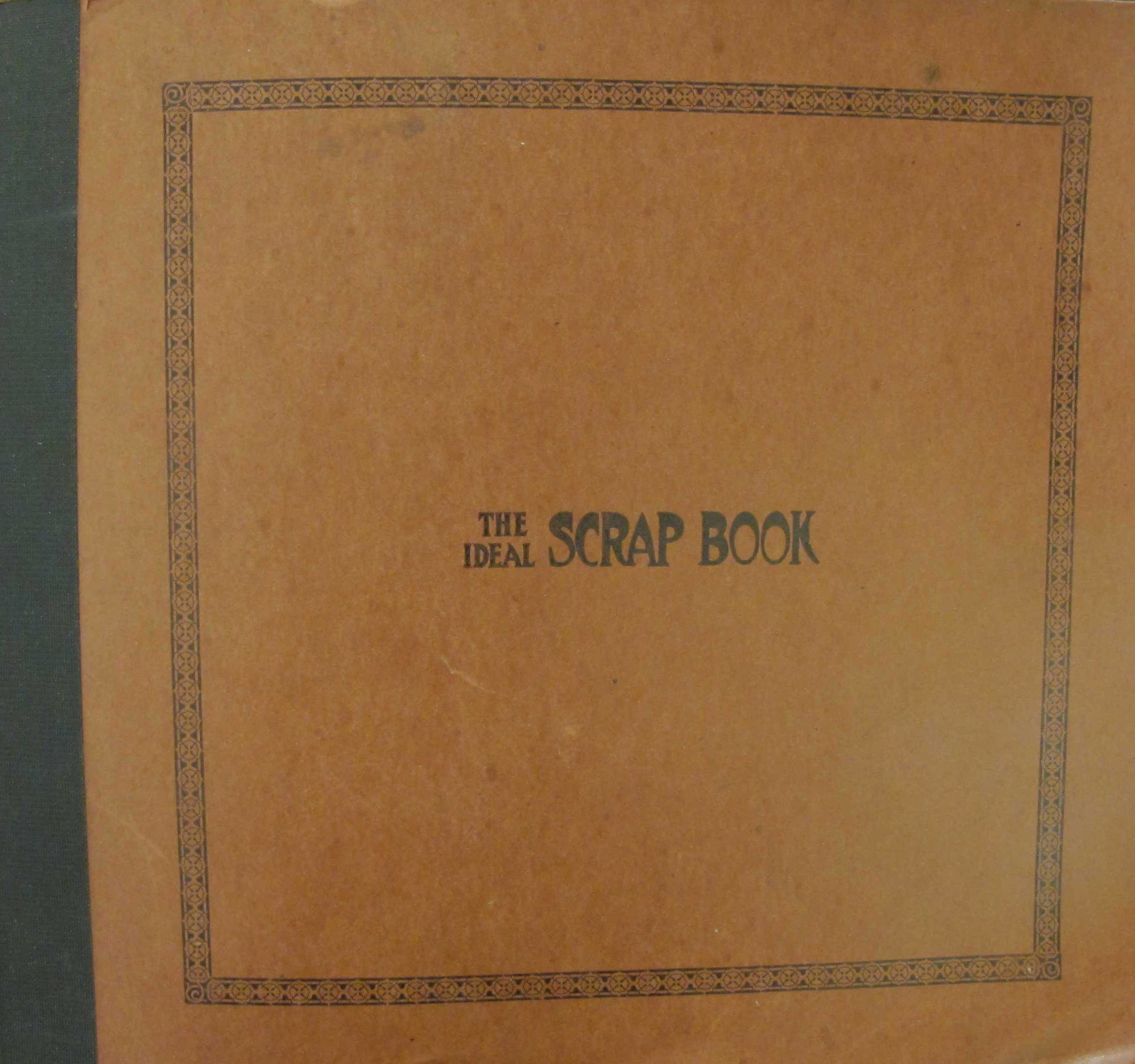
The cover of Lota Blythe’s scrapbook. Photo provided by the Newcomb College Scrapbook Collection at Tulane University.
Ms. Lota Blythe seemed like an average college student, with aged newspaper clippings and fraternal ritual cards, but her desire for the fine arts can be inferred through the other 243 pages of her “ideal scrapbook.” All scrapbooks are meant to reflect the author or composer who put the book together. Like in the article, “Scrapbooks as Cultural Texts: An American Art of Memory,” the authors discuss that there is an establishment of self-narration through compiling a scrapbook. These sacred books become texts of identities–telling various stories of sadness, happiness and moments of transition. All of these rich characteristics are present in Lota’s scrapbook, and with every turn of the page, a new layer appears describing her theatrical and social life.
From the first page of the scrapbook, Lota’s organization skills and attention to detail are obvious. She titled her book, “The Ideal Scrapbook,” possibly inferring the idea that her book informs any type of audience exactly what they wish to know. An old letter from the Newcomb College office begins to tell her story of her time in school. It appears that the sorority, or fraternity at the time, AOPI, extended Lota an invitation to join their organization, and she accepted. Cocktail napkins and place cards conclude the idea that she enjoyed the perks that being in a sorority offered (Images 2 and 3). This seems to be the beginning of just one of the many social activities Lota got involved in on campus.
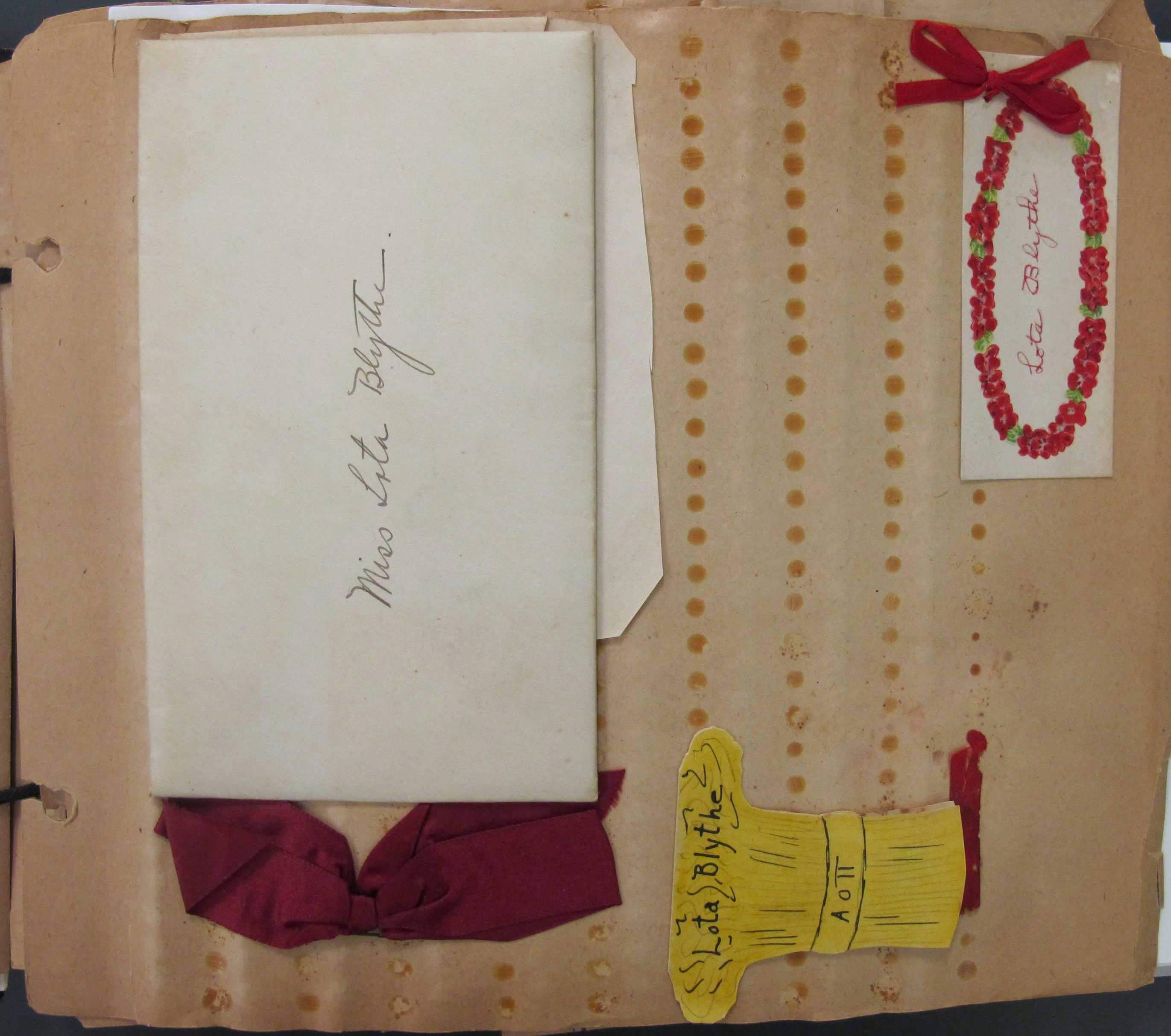
Various fraternity trinkets from Blythe’s college days. Photo provided by the Newcomb College Scrapbook Collection at Tulane University.
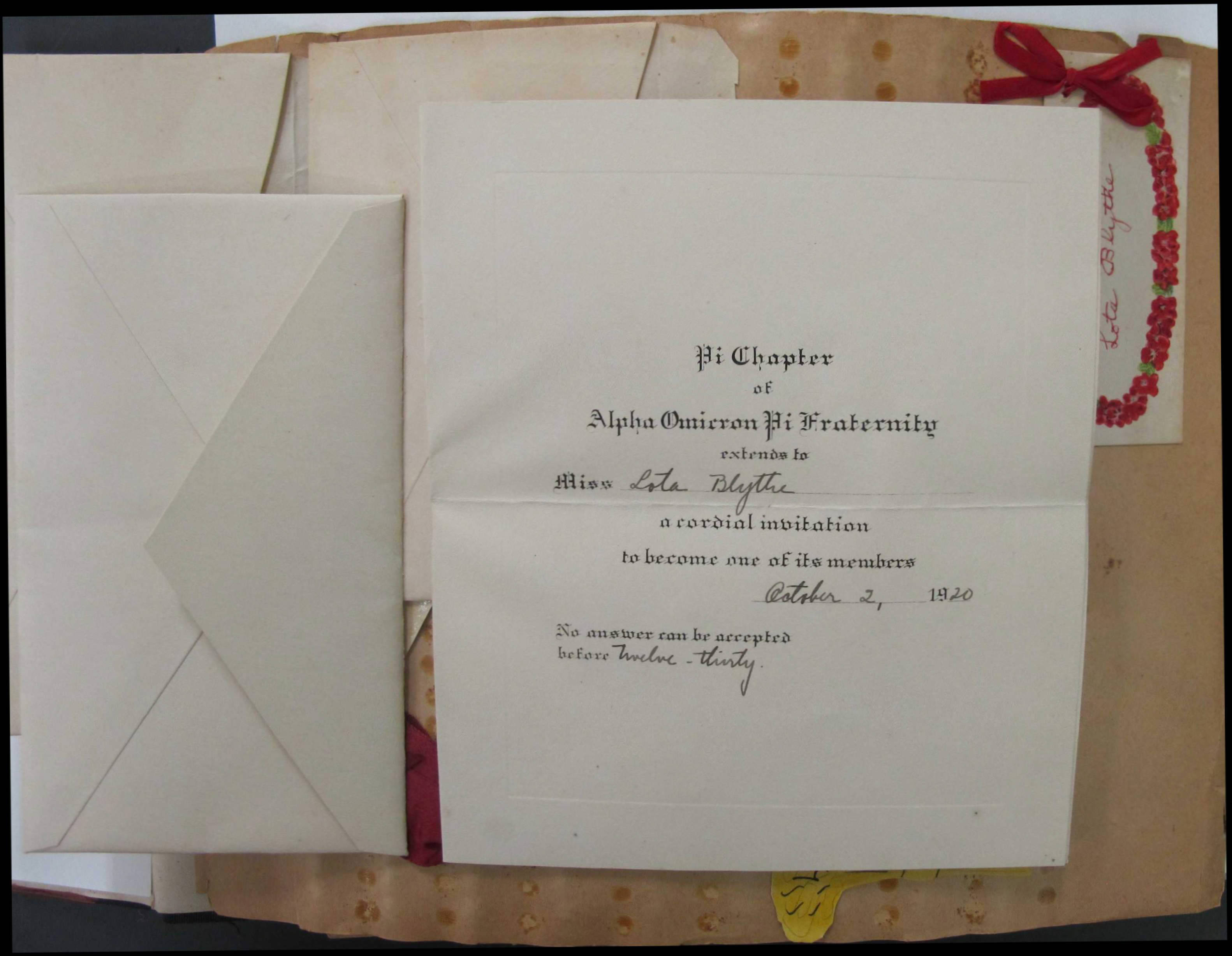
Alpha Omieron Pi’s bid card. Photo provided by the Newcomb College Scrapbook Collection at Tulane University.
The next arrangement of tokens is newspaper clippings, playbills and wedding invitations. One can deduce the idea that Lota enjoyed attending social gatherings or activities of entertainment. Most of the newspaper clippings are comics and not one of the playbills list Lota as an actress in the plays. She was there for her leisure. The theaters hosting these plays varied from the Tulane Theater and concert halls, to even her local hardware store. This suggests that Lota enjoyed the offerings of on-campus productions but also was not afraid to venture out to view local talent. (Images 4-6)
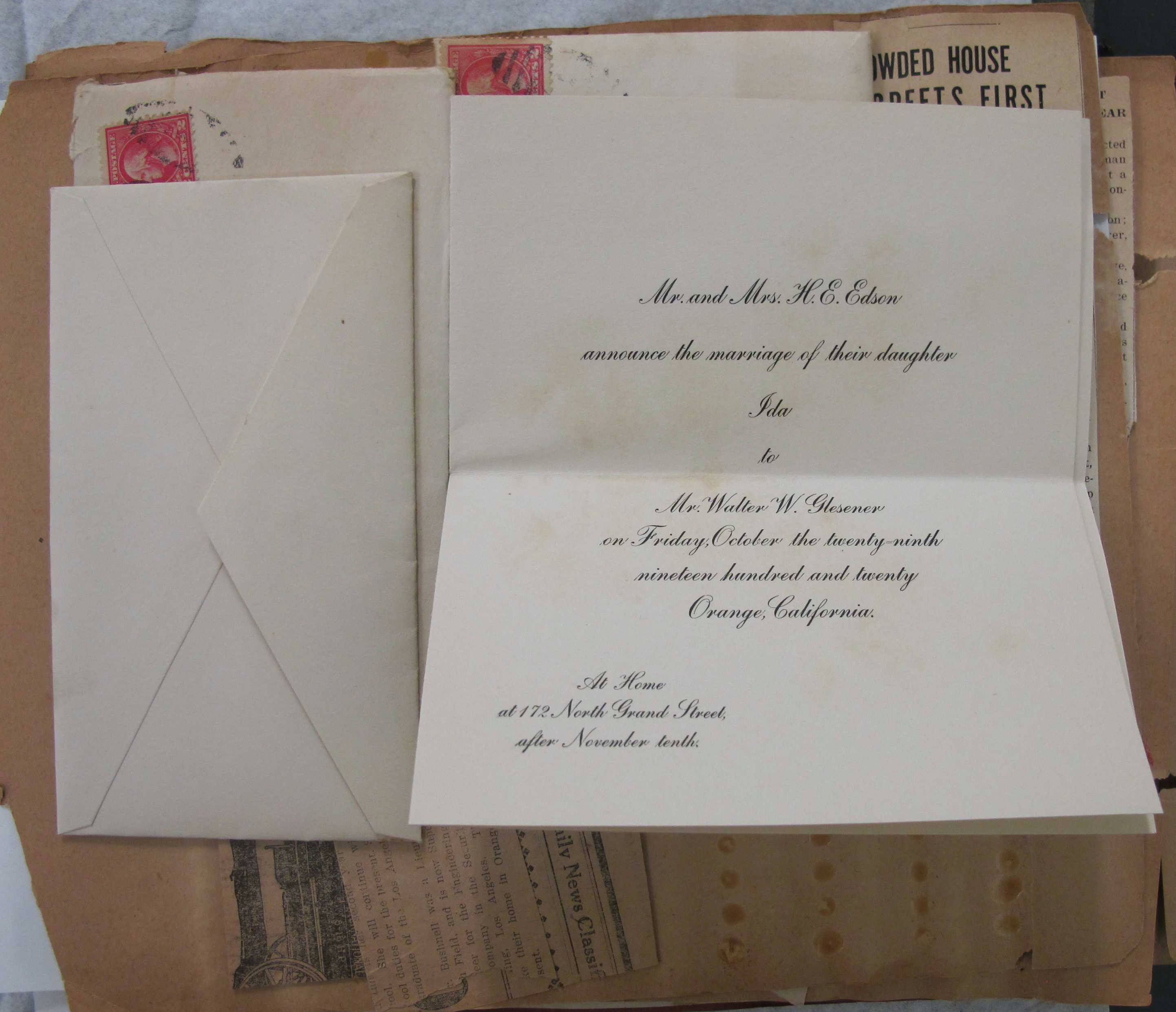
A wedding invitation sent to Lota. Photo provided by the Newcomb College Scrapbook Collection at Tulane University.
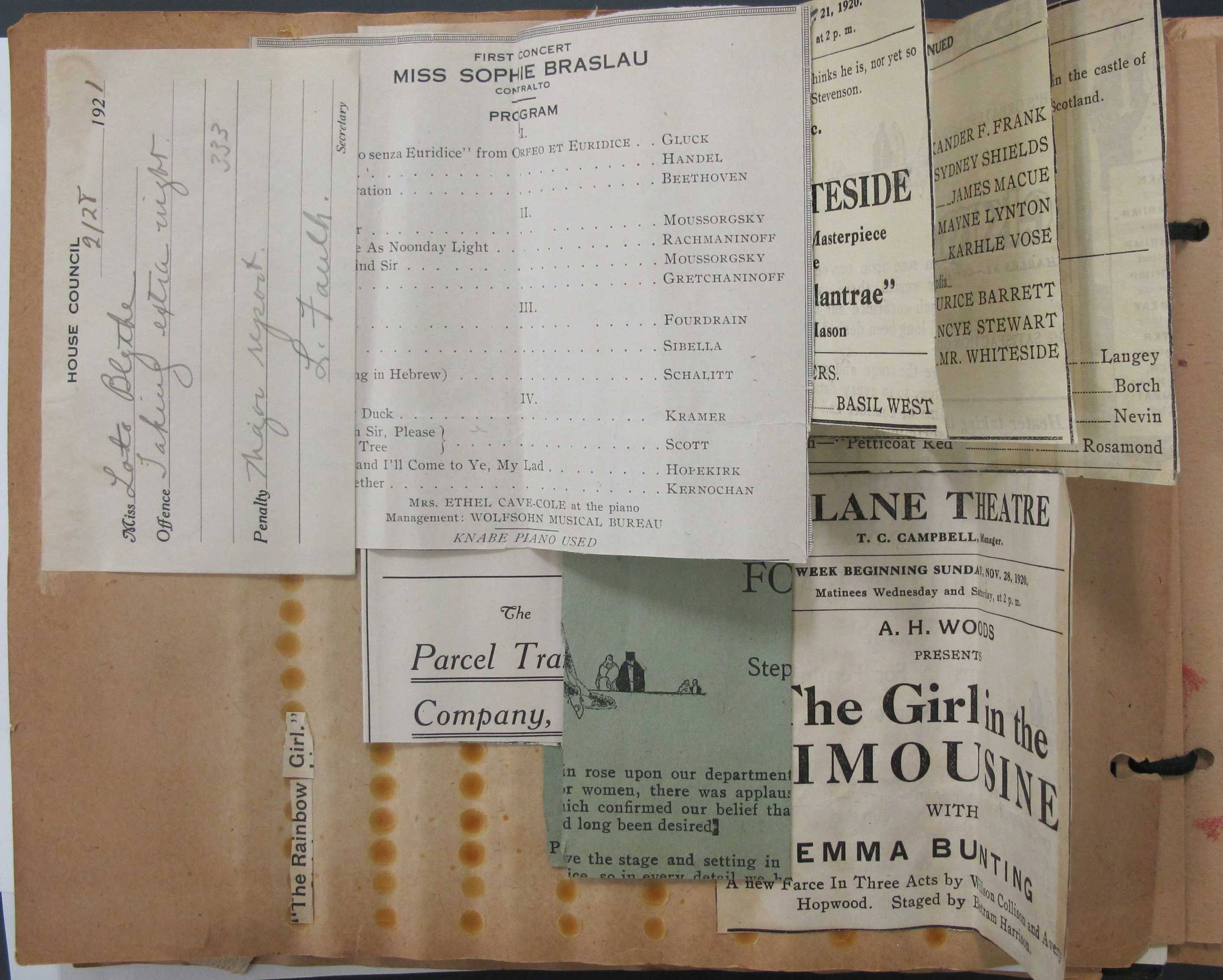
A series of playbills and concert brochures Lota saved. Photo provided by the Newcomb College Scrapbook Collection at Tulane University.
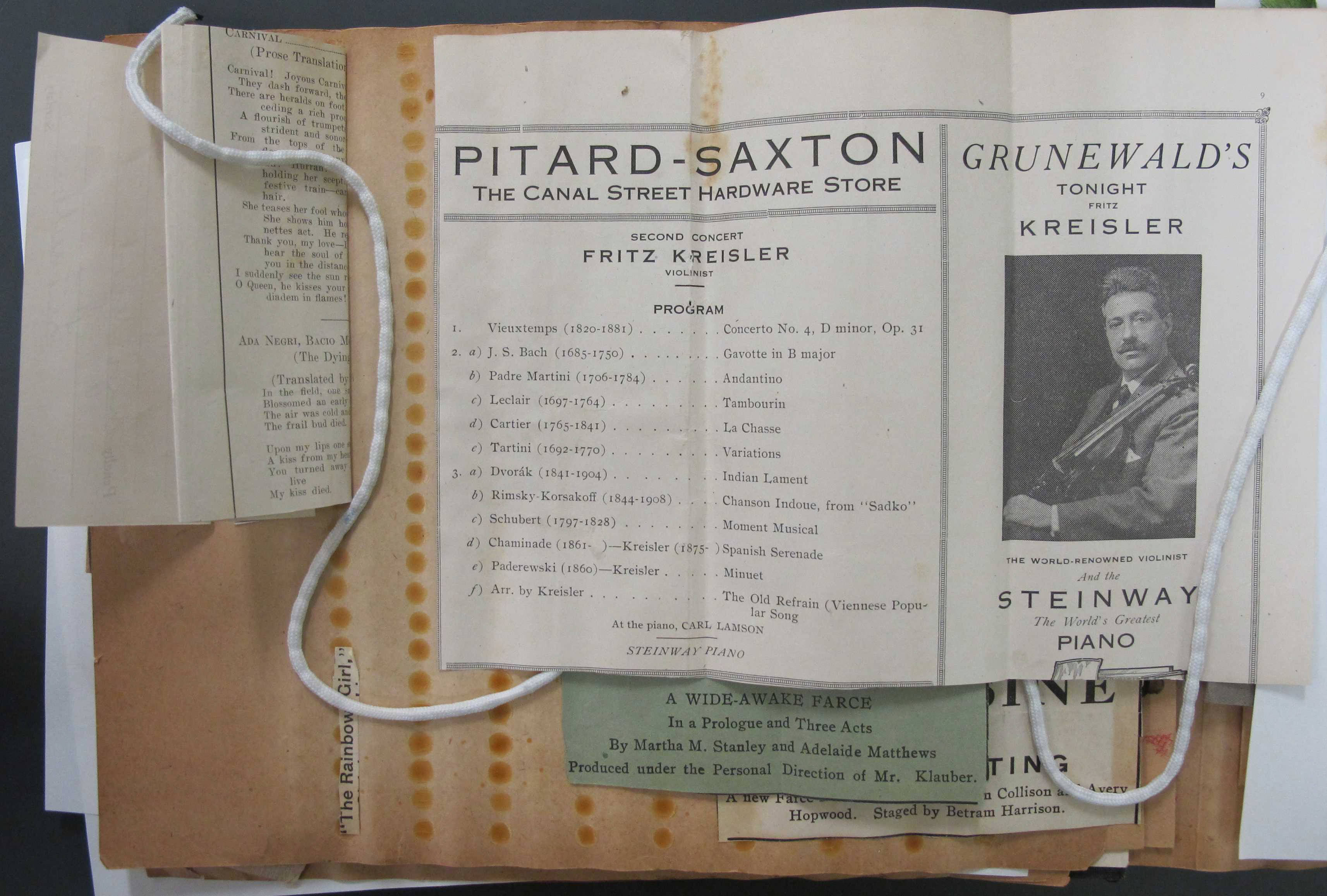
A brochure for a concert in a hardware store. Photo provided by the Newcomb College Scrapbook Collection at Tulane University.
As one of the volumes in Lota’s scrapbooks close, a new one opens. Following the average procession of time in scrapbooks, young to old, the items that signified college do not appear anymore. Instead, cutouts of advertisements from newspapers for corset fittings, automobiles and even how to “save on diamonds.” Possibly, Lota no longer had sorority events on her mind, and finding a man, maybe even a husband, had replaced those thoughts. Also confirming Lota’s age progression is a program for a Newcomb Alumnae show that she possibly attended. (Images 7-9)
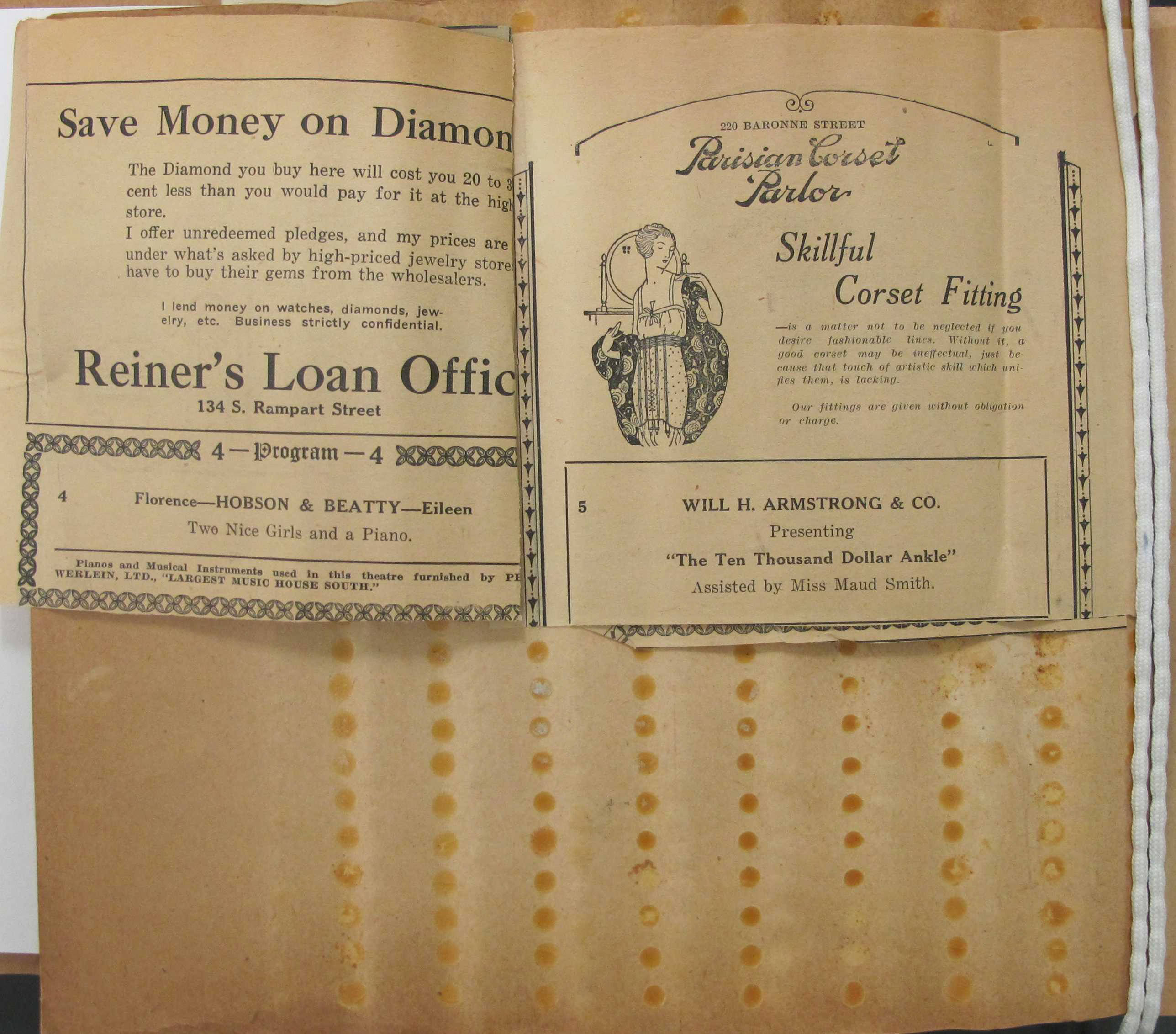
Clipped out ads for diamonds and corset fitting. Photo provided by the Newcomb College Scrapbook Collection at Tulane University.
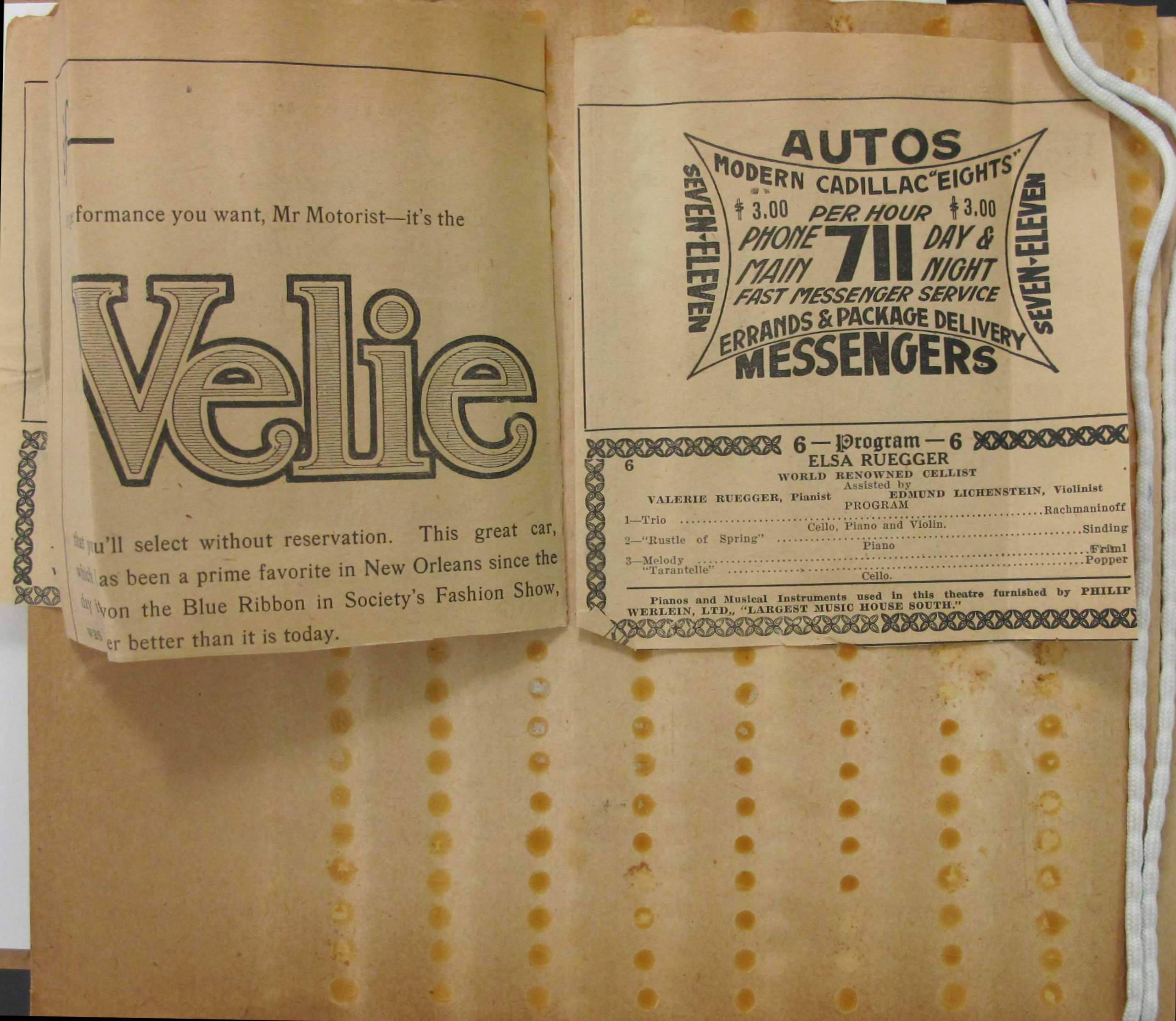
A clipped out ad for an automobile. Photo provided by the Newcomb College Scrapbook Collection at Tulane University.

Another clipped out ad for an automobile alongside the program for the Newcomb Alumnae Vaudeville Show. Photo provided by the Newcomb College Scrapbook Collection at Tulane University.
With no images of Lota herself, and none of a male partner, it is difficult to imagine what her potential love life could have been. However, no reader should think too soon. For the next 30 pages of her scrapbook, Lota has valentines in all forms. Notes, several illustrations, flowers and chocolate wrappers just begin to cover the amount of love that bursts and seeps through these pages. (Images 10-12)
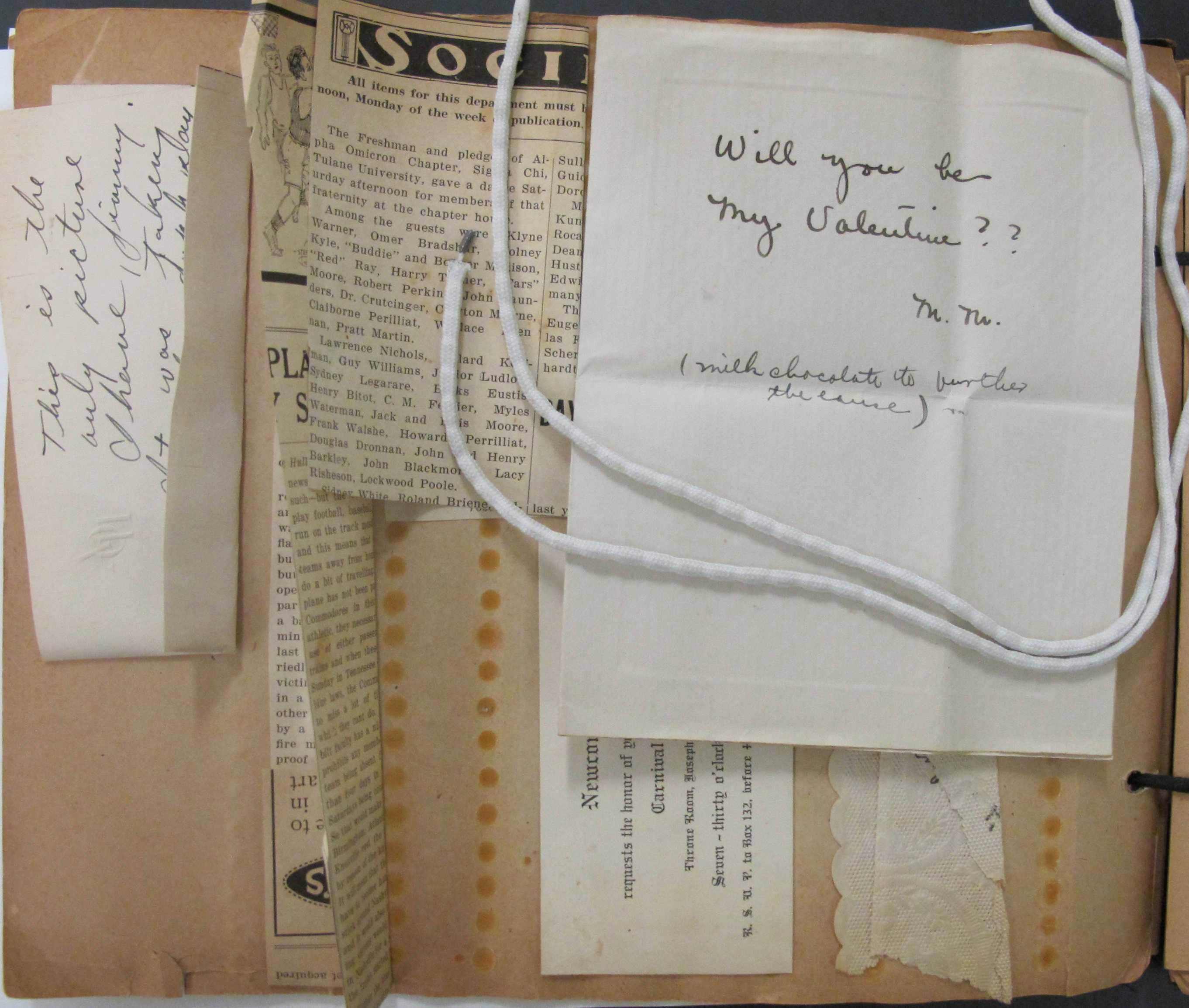
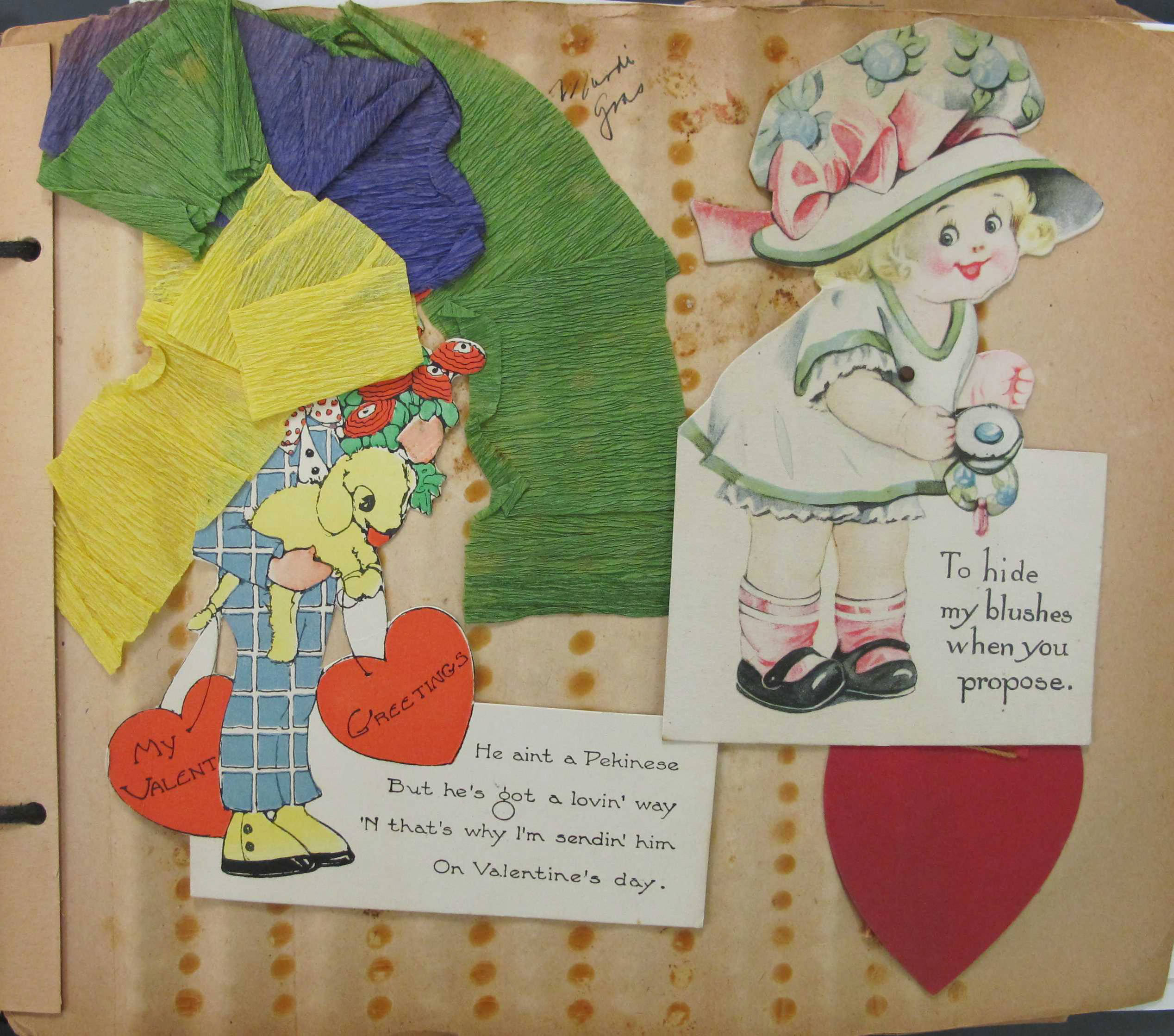
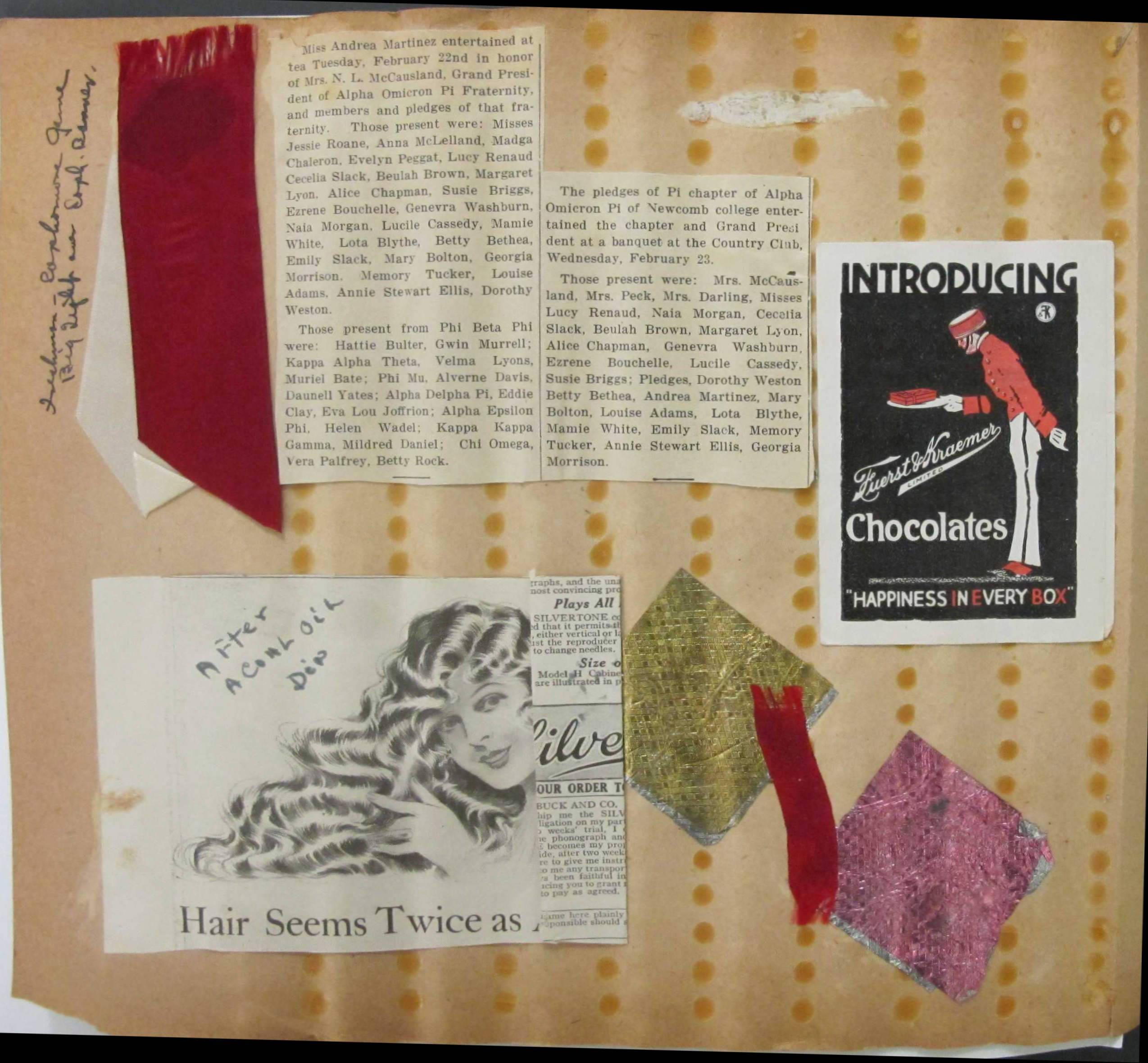
Valentines and chocolates for Lota. Photo provided by the Newcomb College Scrapbook Collection at Tulane University.
After the bearing of one’s soul to Lota via love notes, more playbills follow. But now it is Shakespeare rather than college level productions. It is unclear whether or not Lota married this man of romance or not, but it is extremely apparent that she matured through her time at Newcomb, not just mindlessly attending social events, but for the actual cultural benefit it provided. (Image 13)
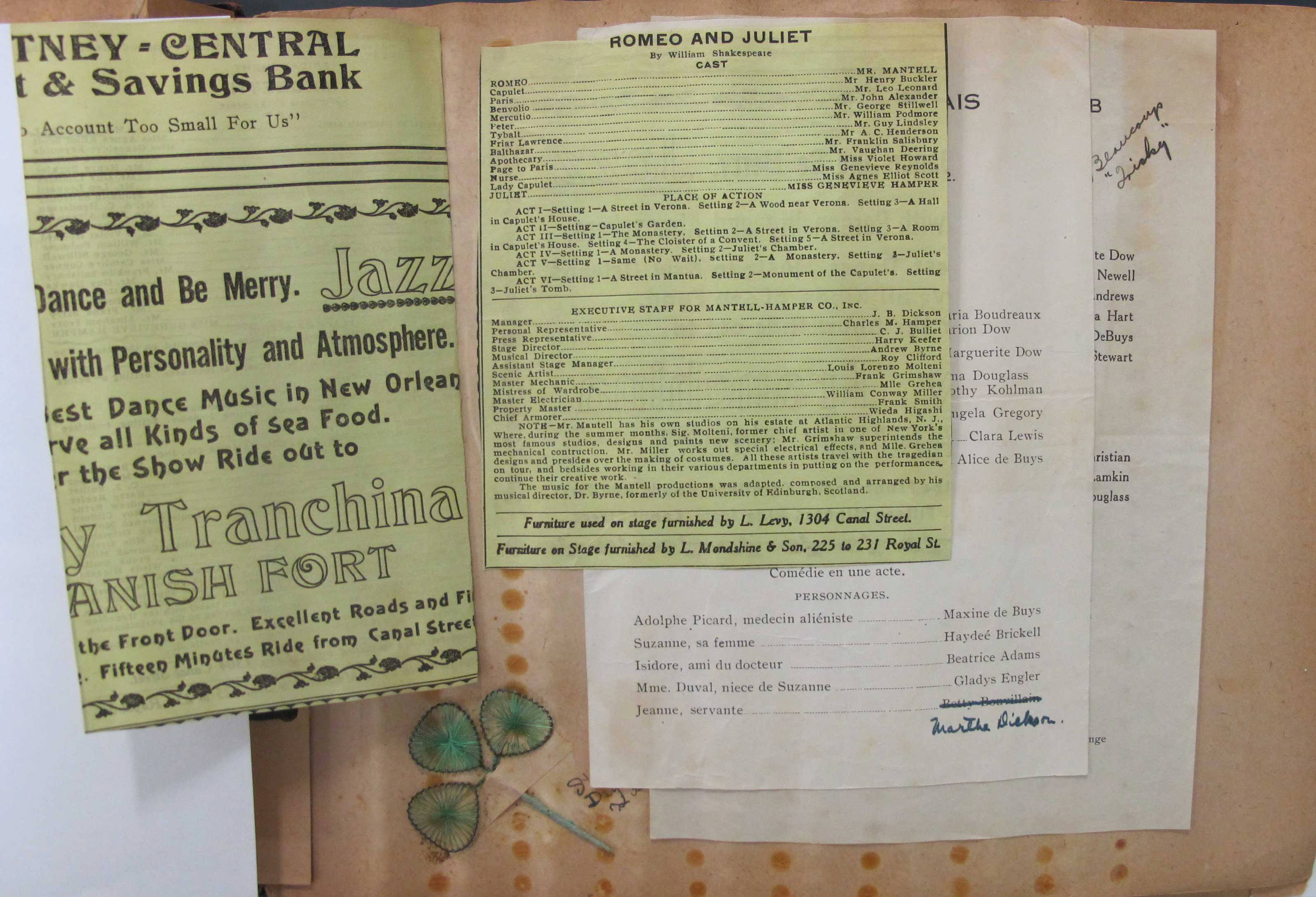
A playbill for a production of “Romeo and Juliet”. Photo provided by the Newcomb College Scrapbook Collection at Tulane University.
I believe this scrapbook was created so that Lota could one day show her family and friends the activities and social events she took part in. Her apparent manifest included collecting playbills, brochures and newspaper clippings but the latent meaning was creating a cultural dynamic between the viewer and the performer. Possibly inferring that satisfaction came only to her from “sitting back, relaxing and enjoying the show.”
[Editor’s Note: This article was captured as part of the class “Media Histories” taught by Vicki Mayer in collaboration with the Office of Alumni Affairs at Tulane University. This piece was originally published on September 11, 2014.]
 NOLAbeings Multimedia artist Claire Bangser created NOLAbeings as a portrait-based story project that marries...
NOLAbeings Multimedia artist Claire Bangser created NOLAbeings as a portrait-based story project that marries...  Voodoo in New Orleans: Reviving history: New Orleans fortune telling This article takes a deep dive into the history of Voodoo in New Orleans, its hybridization with Catholicism, and its present-day place in the city's culture. The author visits fortune-tellers in the French Quarter, using their guidance as a tool for introspection rather than a deterministic predictor of the future. Through her experiences in New Orleans, the author feels a mystical connection to both the past and the future.
Voodoo in New Orleans: Reviving history: New Orleans fortune telling This article takes a deep dive into the history of Voodoo in New Orleans, its hybridization with Catholicism, and its present-day place in the city's culture. The author visits fortune-tellers in the French Quarter, using their guidance as a tool for introspection rather than a deterministic predictor of the future. Through her experiences in New Orleans, the author feels a mystical connection to both the past and the future. 